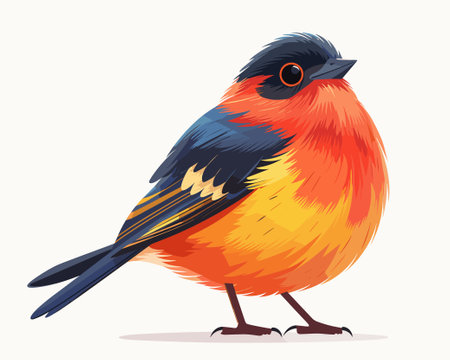Wandering the Ancient Paths: An Introduction
As the first light of dawn weaves through shrouds of mist over rolling moorland, a sense of quiet anticipation stirs the soul. There is something undeniably enchanting about tracing the old footpaths that wind their way through Britain’s timeless countryside—routes once favoured by the nation’s most celebrated naturalists. These ancient trails, etched into the landscape by centuries of footsteps, invite us not only to observe birds in their natural haunts but also to immerse ourselves in the rich tapestry of history and nature intertwined. The gentle call of a skylark or the flash of a kingfisher along a mossy riverbank becomes more than just a sighting; it is an echo from another era, a fleeting connection to those who have walked before us. Birdwatching along these storied tracks transforms an ordinary ramble into an act of homage, deepening our appreciation for both the wild inhabitants and the heritage woven through every hedgerow and glen. Here, each step is a journey into Britain’s living past—a harmonious blend of observation, reflection, and discovery beneath skies that have witnessed countless generations of wonder.
2. Legacies in the Landscape: Celebrated Naturalists and Their Trails
Britain’s countryside is more than just a patchwork of green fields and ancient woodlands; it is a living testament to the curiosity and dedication of its most beloved naturalists. Figures such as Gilbert White, whose observations in Selborne became the cornerstone of modern natural history writing, and Beatrix Potter, who found inspiration for her tales amidst the wilds of the Lake District, have left indelible marks on both landscape and lore. Their careful notes and illustrations not only catalogued birdlife but also wove together the rhythms of nature with the gentle poetry of daily life.
Today’s birdwatchers often find themselves treading these same paths—quite literally following in the footsteps of those who first brought Britain’s feathered inhabitants to public imagination. Whether wandering through the tranquil lanes of Hampshire or along Cumbrian fells, echoes of White’s patient observations and Potter’s whimsical sketches linger in hedgerow shadows and sunlit glades. These trails are not merely routes through nature, but journeys into history, each step a reminder of how personal passion can ripple across centuries.
| Naturalist | Key Location | Trail Highlights | Bird Species Noted |
|---|---|---|---|
| Gilbert White | The Selborne Trail, Hampshire | Ancient woodlands, chalk streams, historic village | Swifts, Nightingales, Red Kites |
| Beatrix Potter | Hill Top & Claife Heights, Lake District | Mossy woods, open fellside, lakeshore paths | Pied Flycatchers, Wood Warblers, Herons |
As you wander these storied landscapes, it’s easy to imagine yourself as part of an unfolding narrative—a shared adventure with those who came before. The calls of birds overhead become echoes from pages penned long ago, while each twist in the path reveals vistas that inspired some of Britain’s most cherished writings. In this way, birdwatching becomes both a quiet act of observation and a tribute to those whose love for wild things shaped our understanding of the natural world.

3. Seasonal Spectacles: Birds Through the British Year
Wandering along Britain’s historical birdwatching trails, one cannot help but be swept up by the subtle magic of the changing seasons. From the moss-carpeted woodlands of Kent to windswept Cornish heath, and the wildflower meadows of the Cotswolds, each landscape transforms with the turning year, offering its own avian wonders and whispered tales from centuries past.
In spring, as bluebells unfurl beneath ancient oaks, the air fills with the jubilant chorus of blackcaps and chiffchaffs returning from distant shores. It is easy to imagine Victorian naturalists pausing in dappled glades, notebooks in hand, recording the first cuckoo call—an event so anticipated that it has woven itself into local folklore. The arrival of swallows skimming over village greens still signals hope and renewal, just as it did for generations before us.
Summer brings long golden evenings when skylarks rise above chalk downland in a fluttering ascent, their song tumbling down like sunlight through buttercups. Amongst ancient hedgerows, nightjars churr at dusk, recalling the delight of Edwardian ramblers who would gather quietly to listen, sharing stories of mysterious birds seen or imagined on these very trails.
With autumn’s approach, woodlands glow amber and russet. Flocks of redwings and fieldfares arrive from the north, feasting on rowan berries beneath a restless sky. Local legends tell of old country folk reading omens in their numbers—a tradition as rooted in the landscape as the mighty beeches shedding leaves onto muddy footpaths once walked by Gilbert White or Beatrix Potter.
As winter settles in, frost rims marshes and reedbeds where bitterns boom and flocks of starlings wheel in breathtaking murmurations over Somerset Levels. Even in these quieter months, there is solace to be found in the steady presence of robins perched upon churchyard yews—faithful companions to both solitary strollers and those famous naturalists who braved the cold for a glimpse of winter’s secretive birds.
Each season along these storied trails reveals not only Britain’s rich birdlife but also a tapestry of history and memory—echoes of footsteps and field notes left behind by those who cherished these landscapes before us. To walk here is to follow a rhythm both ancient and ever-renewing, shaped by nature’s cycles and kept alive in every birdsong that drifts through misty morning air.
4. Cottages, Pubs, and Hides: The Charming Waystations
From the winding lanes of ivy-clad villages to the secluded embrace of ancient bird hides, the British countryside is peppered with enchanting waystations that have offered warmth and respite to generations of naturalists. As you follow in the footsteps of historic birdwatchers, these places become much more than mere stops along a trail—they are living chapters in Britain’s story of nature exploration.
Quaint cottages, often centuries old and flanked by rambling roses, once hosted famed ornithologists who paused to jot down their discoveries over a cup of strong English tea. Many still open their doors today as bed-and-breakfasts or tearooms, where hikers swap sightings beside crackling hearths. Traditional pubs—often named after local wildlife like “The Red Grouse” or “The Swan”—remain the heart of rural camaraderie. Here, muddy boots are welcome, and tales of rare birds mingle with laughter and the aroma of classic fare.
Local Customs and Refreshments
Waystation Type |
Traditional Refreshment |
Cultural Custom |
|---|---|---|
| Cottage Tearoom | Cream tea (scones, clotted cream & jam) | Sharing birdwatching journals by the fire |
| Village Pub | Ploughman’s lunch & real ale | Swapping sighting stories with locals |
| Bird Hide | Thermos of tea & homemade sandwiches | Quiet observation and whispered advice among enthusiasts |
The Spirit of Camaraderie Along the Trail
There is a unique kinship found on these historic trails—a gentle nod from a fellow birder, an impromptu tip about a nearby wren’s nest, or shared binoculars during a sudden flurry of activity in the reed beds. Whether seeking shelter from a rain shower beneath an oak-beamed pub ceiling or listening to the dawn chorus from within a rustic hide, these waystations foster connections not only with nature but also with each other.
This enduring tradition of hospitality—woven through every cottage window and pub doorway—ensures that even as landscapes change, the spirit of British birdwatching endures: welcoming all who wander in search of feathered wonders and kindred souls.
5. In Tune with Nature: Tips for an Authentic British Birdwatching Experience
There is a quiet magic in stepping into the shoes of those who came before, wandering the same dew-kissed meadows and ancient woodlands where British naturalists once scribbled notes and marvelled at fluttering wings. Whether you are just beginning your birdwatching journey or have spent years beneath the shifting skies, a few time-honoured tips can help you blend seamlessly into the countryside tapestry—while upholding the gentle traditions of Britain’s great nature observers.
Respectful Wildlife-Watching Etiquette
First and foremost, remember that you are a guest in the birds’ domain. Approach quietly, treading softly along mossy paths and keeping conversations to a murmur—there is no surer way to send a shy wren darting than a booming laugh or jangling keys. Resist the urge to edge too close; British birds are famously reserved, much like the people. A good pair of binoculars allows you to admire them without intruding on their daily affairs. And as any seasoned rambler will tell you, always leave gates as you find them—an unspoken rule woven into the very hedgerows of rural England.
The Essential Kit for British Birdwatching
Your kit needn’t be elaborate—Victorian naturalists managed with little more than stout boots and boundless curiosity—but a few modern essentials make all the difference. Binoculars are your trusty companion, ideally waterproof for those unpredictable British showers. Dress in earth tones, blending with bracken and bark, and don’t forget a sturdy waterproof jacket; after all, “there’s no such thing as bad weather, only unsuitable clothing,” as the saying goes. A thermos of tea never goes amiss either—it warms chilly fingers and spirits alike as you wait for that elusive song thrush to reveal itself.
Keeping a Naturalist’s Field Journal
No British birdwatching adventure would be complete without a field journal. Channel your inner Gilbert White or Beatrix Potter by jotting down observations: not just lists of species, but sketches of flight patterns, snippets of birdsong rendered phonetically (“chiff-chaff, chiff-chaff”), and even musings on the weather—a topic dear to every Briton’s heart. Over time, these pages become more than records; they capture fleeting moments and gentle encounters with nature’s subtle wonders.
A Sprinkle of British Wit and Wisdom
Above all, embrace patience—and a touch of humour when things go awry (as they often do). If you find yourself caught in a sudden downpour or led astray by an enthusiastic robin, remember: half the joy lies in the unexpected. As one old Sussex birder put it, “You may not see what you came for, but you’ll always find something worth seeing.” Such is the enduring charm of British birdwatching—rooted in history, steeped in tradition, and full of small delights waiting just beyond the next hedge.
6. Preserving the Past, Protecting the Future
Wandering the historic birdwatching trails of Britain, one can’t help but feel a kinship with those naturalists who first documented the flutter of wings and the hush of dawn in these ancient woods and meadows. Their devotion not only captured fleeting moments in nature’s grand theatre but also sowed the seeds of conservation—an ethos that pulses through every mossy lane and windswept heath. Today, as we retrace their footsteps, the responsibility to safeguard these landscapes falls quietly yet firmly upon our shoulders. Conservation has evolved from handwritten field notes to vibrant community action: local volunteers restoring reedbeds, farmers leaving wildflower margins for skylarks, children learning to name birds before they can spell them. The legacy of British naturalists is not preserved in glass cases or dusty tomes, but in the living mosaic of habitats they loved and studied. Every hedge trimmed with care, every footpath trodden lightly, is a gesture of stewardship—a promise that these stories will not end with us.
Yet, this is no solitary endeavour. Each visitor along these trails becomes a thread in a tapestry woven across centuries, entrusted to cherish both memory and habitat. The call of the curlew over misty fens or the flash of kingfisher blue along a shaded riverbank are echoes from the past, asking us to listen—and act. By supporting local conservation groups, respecting nesting sites, and sharing our own discoveries with others, we become participants in an ongoing tale. It is an invitation: not just to witness history, but to write its next chapter. As guardians of these living legacies, let us ensure that future generations may walk these storied paths—eyes wide with wonder, hearts open to nature’s quiet miracles.


